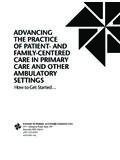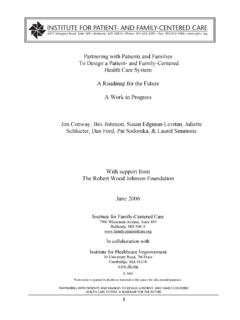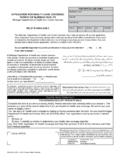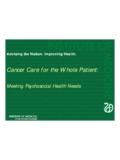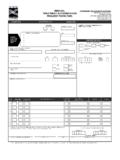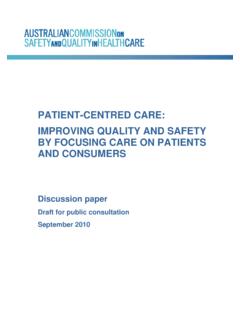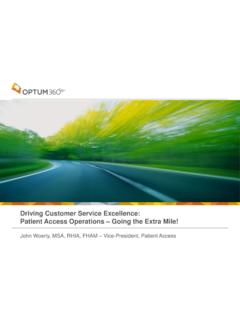Transcription of Guidelines for treatment of drug-susceptible …
1 ATREATMENT OF TUBERCULOSISG uidelines for treatment of drug - susceptible tuberculosis and patient care2017 UPDATETREATMENT OF TUBERCULOSISG uidelines for treatment of drug - susceptible tuberculosis and patient care2017 UPDATEG uidelines for treatment of drug - susceptible tuberculosis and patient care , 2017 updateISBN 978-92-4-155000-0 World Health Organization 2017 Some rights reserved. This work is available under the Creative Commons Attribution-NonCommercial-ShareAlike IGO licence (CC BY-NC-SA IGO; ). Under the terms of this licence, you may copy, redistribute and adapt the work for non-commercial purposes, provided the work is appropriately cited, as indicated below. In any use of this work, there should be no suggestion that WHO endorses any specific organization, products or services. The use of the WHO logo is not permitted. If you adapt the work, then you must license your work under the same or equivalent Creative Commons licence. If you create a translation of this work, you should add the following disclaimer along with the suggested citation: This translation was not created by the World Health Organization (WHO).
2 WHO is not responsible for the content or accuracy of this translation. The original English edition shall be the binding and authentic edition .Any mediation relating to disputes arising under the licence shall be conducted in accordance with the mediation rules of the World Intellectual Property citation. Guidelines for treatment of drug - susceptible tuberculosis and patient care , 2017 update. Geneva: World Health Organization; 2017. Licence: CC BY-NC-SA (CIP) data. CIP data are available at , rights and licensing. To purchase WHO publications, see To submit requests for commercial use and queries on rights and licensing, see materials. If you wish to reuse material from this work that is attributed to a third party, such as tables, figures or images, it is your responsibility to determine whether permission is needed for that reuse and to obtain permission from the copyright holder. The risk of claims resulting from infringement of any third-party-owned component in the work rests solely with the disclaimers.
3 The designations employed and the presentation of the material in this publication do not imply the expression of any opinion whatsoever on the part of WHO concerning the legal status of any country, territory, city or area or of its authorities, or concerning the delimitation of its frontiers or boundaries. Dotted and dashed lines on maps represent approximate border lines for which there may not yet be full agreement. The mention of specific companies or of certain manufacturers products does not imply that they are endorsed or recommended by WHO in preference to others of a similar nature that are not mentioned. Errors and omissions excepted, the names of proprietary products are distinguished by initial capital reasonable precautions have been taken by WHO to verify the information contained in this publication. However, the published material is being distributed without warranty of any kind, either expressed or implied.
4 The responsibility for the interpretation and use of the material lies with the reader. In no event shall WHO be liable for damages arising from its use. Designed by Gen ve in Switzerland. WHO/HTM/ & acronyms vAcknowledgements viDeclaration and management of conflict of interest viiiExecutive summary xSummary of changes in the new Guidelines 2017 and policy recommendations on treatment of drug - susceptible TB and patient care in other existing WHO Guidelines that remain valid, xvIntroduction 1 Objectives 1 Methods used to update the Guidelines 2 Scope of the guideline update 2 Key questions 3 Certainty of evidence and strength of recommendations 3 Assessment of evidence and its grading 4 External review 6 Publication, dissemination, implementation.
5 Evaluation and expiry 7 WHO policy recommendations 81. treatment of drug - susceptible tuberculosis The effectiveness of 4-month fluoroquinolone-containing regimens when compared to the standard 6-month treatment regimen of 2 HRZE/4HR in patients with drug - susceptible pulmonary TB disease The effectiveness of TB treatment using fixed-dose combination tablets when compared to separate drug formulations in patients with drug - susceptible TB disease The effectiveness of intermittent dosing (thrice weekly) of TB medications, both in the intensive phase and in the continuation phase of treatment , when compared to daily treatment Initiation of antiretroviral treatment (ART) in TB patients living with HIV The effectiveness of a TB treatment period of greater than 8 months compared to the standard 6-month treatment period for HIV co-infected patients with drug - susceptible pulmonary TB The use of adjuvant steroids in the treatment of extrapulmonary TB disease The empirical use of the WHO category II regimen in patients who require retreatment for TB 18iv2.
6 Patient care and support Cross-cutting interventions for drug - susceptible TB and drug -resistant TB: effectiveness of patient care and support interventions Model of care for drug -resistant TB: the benefits of treating MDR-TB patients within a decentralized compared to centralized model of care 29 Research priorities 32 References 34 Annexes 46 Annex 1: Experts involved in the development of the Guidelines 47 Annex 2. PICO questions 50 Annex 3. GRADE evidence profilesAnnex 4. Evidence-to-decision tablesAnnex 5. Reports of the systematic reviewsAre available on the Internet at: 2017/dstb_guidance_2017/en/vAbbreviation s & acronymsAIDS acquired immunodeficiency syndromeART antiretroviral treatmentAT S American Thoracic SocietyBMI body mass indexCDC United States Centers for Disease Control and PreventionDOT directly observed treatmentE EthambutolFDC fixed-dose combinationGDG Guideline Development GroupGfx GatifloxacinGRADE Grading of Recommendations Assessment, Development and EvaluationGTB Global TB ProgrammeHIV human immunodeficiency virusIDSA Infectious Diseases Society of AmericaIRIS Immune Reconstitution Inflammatory SyndromeKNCV Royal Dutch tuberculosis FoundationMDR-TB multidrug-resistant tuberculosis Mfx MoxifloxacinNGO non-governmental organizationPICO patients , Intervention.
7 Comparator and OutcomesRIF or R RifampicinRFP RifapentineSAT self-administered treatment or unsupervised treatmentSMS Short Message Service or text messageTB tuberculosisThe Union International Union Against tuberculosis and Lung DiseaseUSAID United States Agency for International DevelopmentVOT video-observed treatmentWHO World Health OrganizationXDR-TB extensively drug -resistant tuberculosisviAcknowledgementsThe recommendations and remarks contained in this document were formulated by a Guideline Development Group (GDG) convened by the WHO Global TB Programme (GTB) of the World Health Organization (WHO) in Geneva, Switzerland, on 11-13 July 2016. WHO gratefully acknowledges the contributions of the members of the GDG. Holger Sch nemann (GRADE Methodologist) chaired the GDG meeting that compiled, synthesized and evaluated the evidence presented during the meeting which made the revision of this 2017 guidance document on the GDG who provided advice prior to, during and after the meeting Si Thu Aung; Frank Bonsu, Jeremiah Chakaya, Lucy Chesire, Daniela Cirillo, Poonam Dhavan, Kelly Dooley, Kathy Fiekert, Mike Frick, Andrei Mariandyshev, Nguyen Viet Nhung, Ejaz Qadeer, Abdul Hamid Salim, Simon Schaaf, Pedro Suarez, Carrie Tudor, Justin Wong Yun Yaw are also acknowledged.
8 It is important to note that this work could not have been finalized without the contribution of the American Thoracic Society/Centers for Disease Control and Prevention/Infectious Diseases Society of America (ATS/CDC/IDSA) with an agreement on sharing at an early stage the evidence profiles and results of systematic reviews on drug - susceptible TB treatment that were commissioned for the update of ATS/CDC/IDSA TB treatment This partnership also allowed the WHO Steering Committee to establish excellent collaboration with the same research teams on preparing and presenting evidence profiles for the GDG meeting. WHO wishes to express its gratitude to the following institutions: University of California, San Francisco, USA; McGill University in Montreal, Canada; The University of Sydney, Australia; Johns Hopkins Bloomberg School of Public Health, Baltimore, USA; and the University of British Colombia, Vancouver, Canada; and to the colleagues from them (Narges Alipanah, Leila Chaisson, Gregory Fox, Jennifer Ho, James Johnston, Richard Menzies, Cecily Miller, Payam Nahid).
9 The external reviewers who provided a review of the completed document - Riitta Dlodlo, Celine Garfin, Vaira Leimane, Lee Reichman, Rohit Sarin, Fraser Wares, Dalene von Delft are also acknowledged. The following staff from WHO Regional Offices reviewed the final draft of the guideline document: Mohamed Aziz (Eastern Mediterranean), Masoud Dara (Europe), Mirtha Del Granado (Americas), Md Khurshid Alam Hyder (South-East Asia), Daniel Kibuga (Africa), and Nobuyuki Nishikiori (Western Pacific).1 WHO/GTB staff members were also invited to be part of the development of the ATS/CDC/IDSA guideline. AcknowledgementsviiThe writing of these Guidelines was coordinated by Giuliano Gargioni, Linh Nguyen and Elizabeth Harausz, under the guidance of Malgorzata Grzemska and with the overall direction of Mario Raviglione, Director of GTB. The authors acknowledge the contribution of the WHO staff participating into the WHO Guideline Steering Committee which provided technical guidance throughout the Guidelines development, namely: Dennis Falzon, Ernesto Jaramillo, Avinash Kanchar, Soleil Labelle, Christian Lienhardt, Knut L nnroth, Nicola Magrini, Fuad Mirzayev, Marco Vitoria, Diana Weil, Karin Weyer, and Matteo Zignol.
10 The contribution of Soleil Labelle in terms of secretariat support and management of declarations of interest, and of Annabel Baddeley and Lana Syed on the review of the sections on TB/HIV and patient care sections is also Barras provided administrative document was finalized following an iteration of comments in late 2016 from members of the GDG, the external reviewers and the WHO Guideline Steering Committee, ahead of submission to the WHO Guidelines Review Committee in January 2017 as part of WHO s internal clearance process. WHO thanks the United States Agency for International Development (USAID) for its financial support through the USAID-WHO grants US-2015-823 and US-2015-827. The contents of this publication do not necessarily reflect the views of USAID or of the United States and management of conflict of interestThe scope for the update of the Guidelines for treatment of drug - susceptible tuberculosis and patient care and the composition of the Guideline Development Group (GDG), as well as the External Review Group, were established in line with WHO s policy on conflict of interest.










